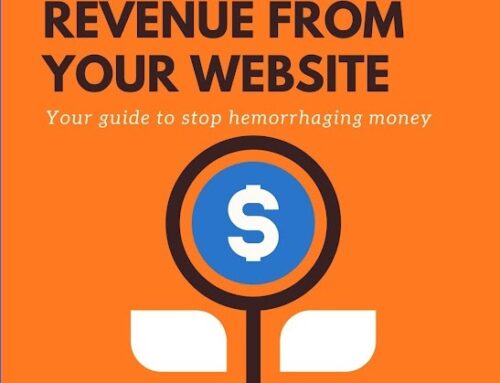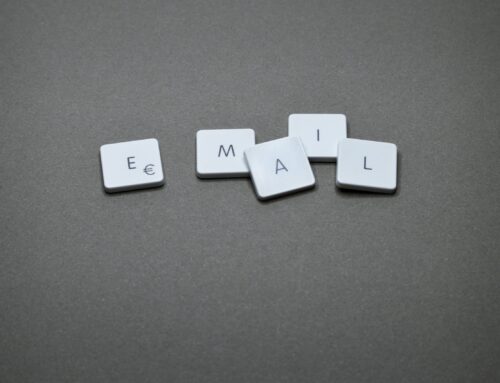When I was the advertising manager for a process equipment manufacturer, one of my responsibilities was to serve as a liaison between the advertising agency we hired to write our ads and product brochures and our staff engineers.
The engineers, because of their technical expertise in the subject matter, were responsible for reviewing the agency’s work.
As is often the case in our industry, the engineers complained that those “ad types” at the agency didn’t understand the product or the audience — and that their copy was way off base.
The agency countered that engineers may know technology but don’t know writing, marketing, design, or selling — and that they wanted to cram the brochures with too much unnecessary detail that would dilute the sales message.
Who was right? The fact is, both arguments have some merit.
On the agency side, ad agency folk often have a flair for creative, colorful communication, which can help a brochure gain attention and be noticed.
On the other hand, clients — especially the engineers who review the agency’s brochure copy — often complain, sometimes correctly, that the agency’s brochure copy is superficial.
Laziness is often the cause. The writer did not do sufficient research to understand both the technology and the needs, concerns, and interests of the target audience. The copy he writes reflects this lack of understanding. When you read it, you immediately think, “This person doesn’t know what he is talking about” — and you are probably right.
Another problem with professional or agency-written product literature is a tendency toward cleverness for the sake of being clever. “Be creative!” the client instructs the agency. But the reader often doesn’t get the joke, pun, or reference in the headline, the creativity goes over her head, and she is turned off rather than engaged.
Engineers who write their own brochure copy are rarely superficial; they usually have a solid understanding of the products and its technology. However, engineers tend to assume that the reader knows as much as the writer, speaks the same jargon, and has the same level of interest in the technology. And often this is not the case.
Take jargon. People today frequently use the term “open systems architecture” in sales literature. But do they really know what this means? Write down your own definition, ask five colleagues to do the same, and compare. I guarantee they will not be the same. Engineers who write often don’t strive for clarity. So they fall back on buzzwords and cliches that, unfortunately, don’t get across the messages they wish to convey.
6 tips for writing better technical product brochures
Given these conditions, how can you — as an engineer or manager who either writes brochure copy, edits copy, approves copy, or provides input for ad agencies or freelance industrial copywriters — do your job better so the finished brochure is the best one possible?
Here are some simple guidelines to follow:
- Define the topic. Is your brochure about a solution? A system? A product line? A product? A specific model of that product? A specific industry use or application of that product? The support services you offer for that product? The accessories?
Define what the piece is about. The narrower the topic, the more focused, specific, and effective your brochure can be within the limited space available.
Tip: Your brochure doesn’t have to cover everything. You can always decide to have other pieces of sales literature that go into more depth on certain aspects of the product.
For instance, you can talk about satisfied users in case histories. You can expand on specifications in a spec sheet. Some marketers use application briefs to focus on a specific application or industry. Others develop separate sell sheets on each key feature, allowing more in-depth technical discussion than is possible in a general product brochure.
- Know your audience. Are you writing to engineers or managers? The former may be interested in technical and performance specifications. The latter may want to know about support, service, ease of use, scalability, user benefits, or return on investment.
If you are writing to engineers, are they well-versed in this particular technology? Or do you have to bring them up to speed? Just because someone is a chemical engineer does not mean they know nearly as much about industrial knives, turbine blades, corrosion-resistant metals, ball valves, or your particular specialty as you do. Indeed, they probably don’t.
When in doubt, it is better to explain so everyone understands than to assume that everyone already understands. No engineer has ever complained to me that a brochure I wrote was too clear.
- Write with your objective in mind. Unlike a Victoria Secrets catalog, which gives the buyer all the information she needs to place an order, most technical product brochures support the selling process but are not designed to complete it on their own.
Is the objective of the brochure to convince the prospect that your technical design is superior to your competition? Or show that you have more features at a better price? Or demonstrate that your system will pay back its cost in less than 6 months?
Establish a communication objective for the brochure and write with that goal in mind. For instance, if the objective is to get a meeting for you to sell consulting services to the client, you only need to include enough to convince them that the meeting is worth their time. Anything more is probably overkill.
- Include the two things every brochure should contain. These simply are (a) the things your prospects need and want to know about your product to make their buying decision and (b) what you think you should say to persuade them that your product is the best product choice — and your company is the best vendor.
The things a prospect wants to know about an industrial product might include weight, dimensions, power requirements, operating temperature, and whether it can perform certain functions.
Things you might want to tell them include how the performance compares with competitive systems in benchmark tests (if you were the winner, of course) or the fact that it was cited as “Best Product” by an industry publication, or won an award from a trade association, or is the most popular product in its category with an installed base of more than 10,000 units.
- Be selective. While ad agency copy is sometimes too light and tells the reader too little, engineer copy often makes the opposite error, attempting to cram every last technical fact and feature into a four or eight page brochure.
Keep in mind that your prospect is bombarded by more information than he can handle on a daily basis. Everyone has too much to read, and not enough time to read it. According to a study by the School of Information Management & Systems at UC Berkeley, each year the human race produces about 1.5 exabytes of unique information in print, film, optical, and magnetic content worldwide—roughly 250MB of new information for every man, women, and child.
Be selective in your presentation. Copywriter Herschell Gordon Lewis has a formula, E2 = 0. Or as Lewis says, “When you emphasize everything, you emphasize nothing.” If every fact about your product is given equal weight in the brochure, the key facts that make the most persuasive case for buying the product will not stand out.
- Understand the selling environment. There are three basic selling situations for process equipment, chemicals, and other industrial products. You must know what situation your product falls into, so you can market it effectively.
The first situation is that the prospect is not acutely aware of the problem he has that your product can solve. Or he is aware of it but does not consider it a priority. In this situation, to get your prospect’s attention, your brochure must dramatize the problem and its severity, then position your product as the solution.
Example: Mainframe computer operators did not realize that certain operations accidentally overrode and erased files stored on magnetic tapes. A brochure for a utility that prevented this operation from occurring began, “Did you know that your storage devices may be accidentally wiping out important files even as you read this sentence?” It alerted them to the problem in a dramatic way.
Once alerted to a problem they didn’t know existed, the readers were eager to find a solution, which the utility handily provided. Sales were brisk.
The second situation is that the prospect is aware of the problem or need your product addresses, but is not at all convinced that your type of product is the best solution.
Example: A chemical manufacturer warned wastewater treatment plants that their current activated charcoal bed systems were too costly.
The plant managers believed that, but didn’t believe that the manufacturer’s alternative filter technology was a viable solution. A paper reprinting lab test results plus the offer of a free trial overcame the disbelief and got firms to use the new filter system.
The third situation is when the prospect knows what his problem is, believes your type of product is the right solution, but needs to be convinced that your product is the best choice in the category, and better than similar products offered by your competitors.
One way to demonstrate superiority is with a table comparing your product with the others on a feature by feature basis. If you have a complete feature set than they do, such a table makes you look like the best choice.
Another technique is to give specifications that prove your performance is superior. If this cannot be quantitatively measured, talk about any unique functionality, technology, or design feature that might create an impression of superiority in the prospect’s mind.
There are many other copywriting techniques available to produce a superior technical product brochure in any of these three situations; this is why I’ve devoted the past 20 years, my entire professional life, to practicing and studying copywriting — just like an engineer practices and studies his specialty.
But if you follow the basics in this article and do nothing else, I guarantee an improvement in your brochures that you, your sales reps, and your customers will appreciate. You might even someday receive that rare compliment: “You know, I actually read your brochure. It wasn’t boring, and it told me what I needed to know!”
For further reading:
The Copywriter’s Handbook. Robert Bly. Henry Holt & Co. 1986.
Effective Chemical Marketing, Advertising, and Promotion. J. Roger Hart. Noyes Publications. 1983.
Confessions of an Advertising Man. David Ogilvy. Atheneum. 1963.
This article appears courtesy of Bob Bly’s Direct Response Letter




